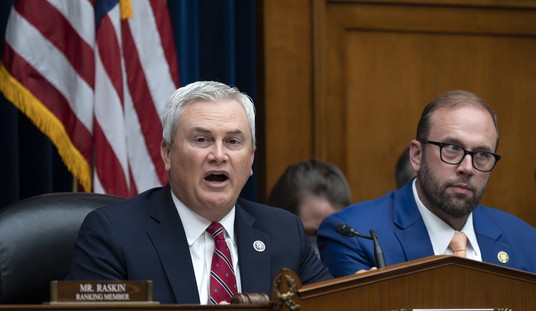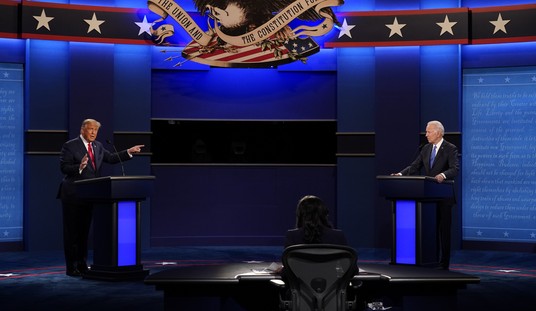Two weeks ago I wrote a column on the proposed rule to list the polar bear as a "threatened species" under the Federal Endangered Species Act.
This past Monday, California Senator Barbara Boxer chaired a hearing on why the United States Department of the Interior had failed to make the decision on whether to list the bear. The hearing was a classic of the genre: "Experts" testified on the peril confronting the polar bear, and Boxer and others declaimed on the need for the feds to get off the dime and list the animal.
As I noted a fortnight ago, the listing of the bear is just the first step in an elaborate dance that will result in the imposition of extraordinarily expensive and delay-inducing permitting requirements on any industrial or commercial activity that (1) requires a federal permit of any sort and (2) emits greenhouse gases.
But don't believe me. Believe the proponents of the listing. In a candid and detailed statement of the objectives behind the listing push, the Executive Director of Wildlife Conservation and Global Warming at the National Wildlife Federation, John Kostyack, and Professor Dan Rohlf of the Lewis & Clark Law School have laid out the potential far-reaching impacts of a listing. Their article, "Conserving Species in an Era of Global Warming," appeared in the most recent issue of the Environmental Law Reporter. It should be read by anyone who relies on a federal permit to go about their business, whether that business is oil exploration, gasoline refining, road construction, farming, grazing, mining or home building. Kostyack and Rohlf first review what they see to be the climate change perils confronting many species, including the polar bear, and then chart how the Federal Endangered Species Act ("FESA") could be brought to bear upon the issue of global warming via the section of the FESA that compels "consultations" between any part of the federal government proposing to issue a permit that could impact a threatened or endangered species and the U.S. Fish & Wildlife Service:
Recommended
The procedural and substantive protections of Section 7 will almost certainly continue to play a vital role in any future framework for conserving imperiled species. Its provisions require federal agencies to assess their actions and consult with the Services on actions that may affect listed species or designated critical habitat in order to ensure that federal activities are not likely to jeopardize listed species or destroy or adversely modify critical habitat. Today the FWS [Fish & Wildlife Service] and the NMFS [National Marine Fisheries Service] conduct thousands of consultations each year. With scientists increasingly able to link climate change with specific threats to imperiled species, far-reaching questions about the future of Section 7 arise. For example, now that the NMFS has listed two coral species as threatened due largely to climate change, and the FWS appears likely to do the same for polar bears, what sort of federal actions "may affect" these animals and their habitats? It is clear that the impacts of climate change, such as disrupted hydrological cycles, must be addressed in ESA consultations. But must the Services also assess the causes of global warming for their effects on listed species? Given that projects releasing GHG [greenhouses gases] will exacerbate climate change no matter where they occur in relation to listed species, must proponents of every single federal project causing increases in GHG concentrations consult with the Services regarding impacts on coral species, polar bears and other species listed due to climate change? Would this consultation duty apply to future permits for construction or would it also reach continued operation of federal projects? Indeed, one can think of thousands of federal activities throughout the country --or the globe-- that facilitate increased GHG emissions and thus may affect listed species at risk of extinction in part due to climate change. Will it be necessary to exponentially increase Section 7 consultations? Is this practical or even possible?
Whether "practical or even possible," you can be assured that various environmental groups will follow the listing of the polar bear with a series of test cases under the citizen standing suit provisions of the FESA designed to oblige all federal agencies issuing permits to anyone whose business involves the release of GHG to stop those permits unless and until Section 7 "consultations" are carried out with the Service. Professor Rohlf and I have been on opposite sides of FESA litigation for most of the past ten years. He and his colleagues are superb litigators, and their roll-out of suits to enforce the listing will be swift and comprehensive. Expect the suits to appear first in the district courts of the Ninth Circuit where the FESA has enjoyed its most expansive interpretations. But the cases won't stay there. Though the polar bears are in the arctic, any federal permit leading to emissions that could affect their ice will be subject to new federal scrutiny.
Thus any lease of federal land and any federal highway project will be the target of the advocates for urgent reduction in carbon emissions. They will argue that courts must immediately enjoin any federal permit unless and until the U.S. Fish & Wildlife Service or the National Marine Fisheries Service has reviewed the permit and suggested mitigations --including redesign or compensatory carbon offsets. The avalanche of lawsuits waiting in the wings all come with the promise of attorneys fees awards as well, guaranteeing that the FESA litigation cycle will never end.
How ought industry to respond now? By filing a challenge to the polar bear rulemaking on a variety of grounds including the failure of the notice provided the public to fully communicate the importance of the listing to the American economy. Other challenges are possible as well, but for now the awareness of those likely to be side-swiped by the listing is at best low, their sense of imminent upset of their plans for expansion and exploration minimal.
With the publication of Kostyack's and Rohlf's article, though, the victims of the expansive reading of the FESA will not be able to claim they couldn't see it coming. Rarely has a bold regulatory push been more loudly proclaimed. The polar bear listing will act as a giant tractor beam, pulling in thousands and thousands of projects into the orbit of the wildlife agencies and the environmental groups. Once it is turned on, that beam will be almost impossible to disable.
























Join the conversation as a VIP Member